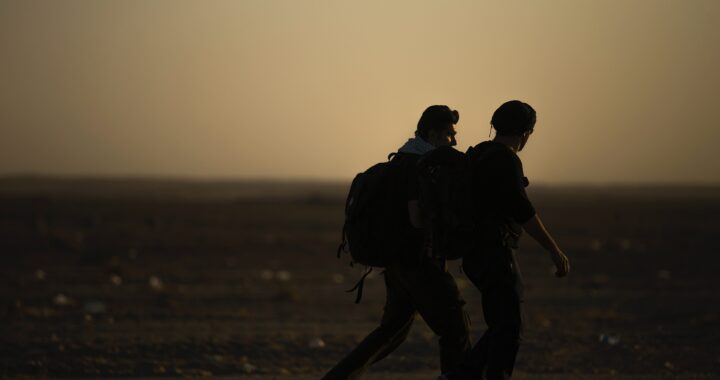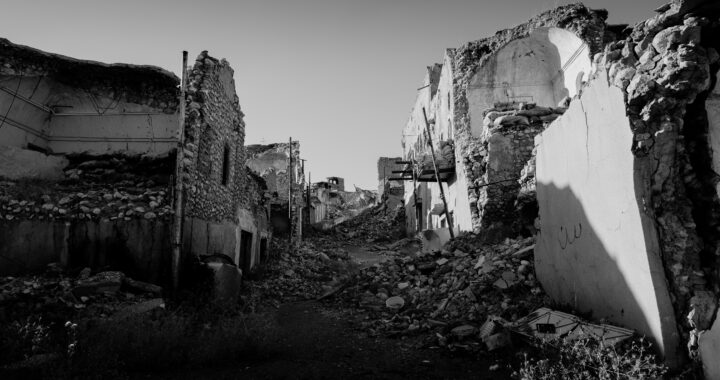Lift your heads up high. You now have a state and a caliphate that restores your honor, your might, your rights and your sovereignty. The state forms a tie of brotherhood between Arab and non-Arab, white and black, Easterner and Westerner. The caliphate brings together the Caucasian, Indian, Chinese, Shami, Iraqi, Yemeni, Egyptian, North African, American, French, German and Australian…. They are all in the same trench, defending each other, protecting each other and sacrificing for one another. Their blood mingles together under one flag [with] one goal and in one camp… perform hijra from darul-kufr to darul Islam. There are homes here for you and your families. You can be a major contributor towards the liberation of Makkah, Madinah, and al-Quds. Would you not like to reach Judgment Day with these grand deeds… A life of jihad is impossible until you pack your belongings and move to the caliphate.[1]
Why did so many Southeast Asian Muslims leave their countries to join Daesh in Syria and Iraq? To answer this question, it is necessary to understand the conceptual importance and historical significance of hijra (pilgrimage) in Islam. Hijra refers to the flight of Prophet Muhammad (SAW) and his followers from Mecca to Yathrib (Medina) in 622 CE to escape religious persecution by the Meccans. This event also marked the beginning of the Muslim era – year 1 of the Hijri lunar calendar. On this day, Muslims around the world celebrate Awal Muharram, whichsignifies the first day on the Muslim calendar to remember the Prophet Muhammad (SAW)’s migration.
The terrorist group known as Daesh, or the Islamic State, saw this Islamic chronicle as a convenient opportunity to augment their state-building enterprise. Daesh weaved themselves into the narrative by promoting the concept of hijra to Iraq and Syria (al-Sham) to sugar-coat their so-called Caliphate as a legitimate substitute for Mecca. This was by no means a valid religious obligation, but in fact an effort on their part to recruit foreign terrorist fighters (FTFs) and replenish their ranks. Further examination of their propaganda identified eight core messages in their narratives on hijra to their Caliphate. They were:
- Calls to hijra,
- Significance and legitimacy of hijra,
- Promises of rewards achieved from hijra,
- Punishments for not performing hijra,
- Exemplary behaviour in relation to hijra,
- Women’s role within the context of hijra,
- Alternatives to and variations of hijra, and
- Hijra as atonement for one’s sins.
These eight attributes highlighted how these messages resonated strongly with the targeted Muslim audience. For Muslim individuals who are anxious about becoming better Muslims by looking for ways to absolve their sins, they might have found Daesh’s promises of the great Caliphate appealing. For Muslims seeking a more meaningful existence in life, Daesh’s offer of adventurism within the Caliphate struck a chord with them. Moreover, Daesh effortlessly milked identity politics to promote the idea that it is impossible for both Muslims and non-Muslims to co-exist, and the Caliphate was the ideal alternative that Daesh could offer. Daesh had capitalised on the wars that the West had waged in Iraq and Afghanistan in their Great War on Terror (GWOT) campaign by fanning grievances and exploiting the sense of injustice felt by Muslims because of them.
In 2008, while Daesh was still going by the Islamic State of Iraq (ISI) and had been driven out of Baghdad by US troops, another dramatic exigency was unfolding across the globe. The excessive lending by banks triggered the Global Financial Crisis (GFC) in 2008, which saw the economy of the United States and Western Europe collapsed. As the recession emerged in Wall Street, its tidal waves swept across the world and struck the Southeast Asian economies through trade and financial channels, sending their exports and stock prices tumbling. As incomes fell, a new class of working poor started to surface as the retrenchments caused the job market to shift from formal steady occupation to informal and vulnerable employment in 2009. By the time ISI proclaimed Abu Bakr al-Baghdadi as the leader of ISI in 2010, the gig economy was introduced for the first time through the launch of the shared ride company, Über.
With the rising unemployment in the region, increasing sense of marginalisation and discrimination, growing frustration with the systemic corruption, and soaring desperation to survive, this injustice felt even more profound. Over the years, Daesh’s media organ intensified their propaganda effort to give off the illusion that there were better and greater opportunities within Iraq and Syria. Their messaging campaign was very appealing to the young Southeast Asian Muslims who were struggling to find new opportunities. The dream of starting a new life where one could feel wanted with a sense of belonging was irresistible. On average, young Muslims who were raised in strict and conservative households were found to be more susceptible to Daesh’s promise of Elysium, as their desire to rebel was more profound. As of December 2015, approximately 30,000 foreign terrorist fighters from 85 countries had arrived in Iraq and Syria. Even though they were confronted with evidence of a brutal life under Daesh’s governance, which was fraught with injustice, barbarity, and totalitarianism, they could not be convinced otherwise. Daesh had successfully created a powerful fantasy that had largely gone unchallenged for too long. This was a damning indictment upon most governments in this region as well as within civil society for their inaction.
The need to create strong and effective counter-narratives has never been more urgent. Policymakers need to understand how important it is to take control of existing narratives to push out the message that life outside of Daesh’s brutish authoritarianism is both possible and better. It is important to promote the idea that Muslims can and should co-exist with non-Muslims. It is also equally important to emphasise that Islamic values are equally compatible with other values. Policymakers should recognise that it is crucial to nurture the message that living in a multicultural society where different people of different ethnicities and nationalities is an incredible and meaningful experience. This is more empowering and resilient than Daesh’s divisive ideology of fascism and nihilism.
The concept of creating counter-narratives in order to push back against extremist recruitment and propaganda has become well-established in recent years. However, in practice, it has proven to be difficult to curate this in a systematic way in order to target the demographics who are at risk. Most importantly, to be able to measure the impact of the counter-narrative against their behaviour to analyse the results to explain and understand the FTF phenomenon. The following techniques and best practices can be adopted based on different scenario and country:
- Narratives are effective tools. Terrorist groups are adept at using narratives in their communications both to mobilise support and to delegitimise governments. It is vital to understand how narratives are utilised in order to counter them. Terrorists exploit both online and traditional media, but both media may also be important partners for countering violent extremism effort.
- Targeting the right audience. Prevention of radicalisation is likely to be a more productive approach than attempting to deradicalise those who have already joined terrorist organisations. In particular, the key target audience for counter-narrative efforts should be the so-called fence sitters, individuals who are showing an active interest in extremism (or are being targeted by recruiters) but who are still undecided and have yet to mobilise.
- Simplicity of messaging. Terrorist narratives tend to convey simple, yet powerful messages. Tailored to their target audience, these messages are often visually, intellectually or emotionally stimulating. Counter-narrative efforts must use similar techniques to be equally effective.
- The importance of non-governmental partners. Regardless of the method of delivery (on- or off-line, direct or indirect) non-governmental partners have a crucial role to play. Key partners may include a variety of NGOs, charities, faith institutions, local networks, community leaders and individual citizens as well as the private sector. Governments must seek to build trust, engage with, empower, and facilitate the actions of these key partners, without destroying their credibility as influential messengers. It was also recognised that a hard counterterrorism (CT) approach may sometimes undermine these relationships, meaning that special care must be taken to maintain them.
- Timing is everything. Counter-narrative efforts must be timely, dynamic and flexible to respond to rapid changes in the environment. This is a particular challenge for government bureaucracies.
- Measuring impact. Online platforms in particular provide some readily available measurements such as number of visits or page views, likes, shares, discoverability in search engines, global reach and comments. However, as important as such measures are, they are relatively superficial. It is essential to try to measure the impact of counter-narratives among the target audience in as much detail as possible in order to identify best practices.
Since counter-narratives are only effective as the first line of defence, it is even more necessary to develop credible alternative narratives – narratives that can give a new sense of purpose, meaning and hope to those who feel that they have no future in the society. Those in the positions of authority have to show them that we are not living in blocked societies where desired changes can only be achieved through violence. Policymakers have to listen not only to the grievances of young people but also address their hopes and their expectations for the future. They must be able to empower young people to actively shape their own future in pluralistic and open societies. It is imperative to show that terrorism is futile in the wake of the destruction it causes because it could never achieve concession, and therefore must be unequivocally rejected.
[1] K. Leggiero, “Countering ISIS Recruitment in Western Nations”, Journal of Political Risk 3, No. 1 (January 2015)


